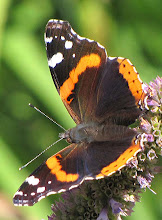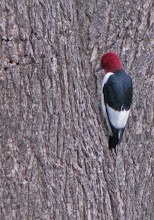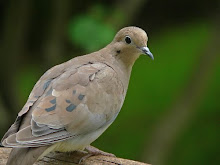and there is a smell of tulips and narcissus in the air.
~ Amy Lowell
 (Above double tulip Angelique, in my opinion one of the best and longest lasting tulips. This one has come back for five years but that is rare)
(Above double tulip Angelique, in my opinion one of the best and longest lasting tulips. This one has come back for five years but that is rare)Below Henry Van Dyke's poem: When Tulips Bloom (1894) illustrated with photos from my garden.
When tulips bloom in Union Square,
And timid breaths of vernal air
Go wandering down the dusty town,
Like children lost in Vanity Fair;
When every long, unlovely row
Of westward houses stands aglow,
And leads the eyes to sunset skies
Beyond the hills where green trees grow;
Then weary seems the street parade,
And weary books, and weary trade:
I'm only wishing to go a-fishing;
For this the month of May was made.
I guess the pussy-willows now
Are creeping out on every bough
Along the brook; and robins look
For early worms behind the plough.
The thistle-birds have changed their dun,
For yellow coats, to match the sun;
And in the same array of flame
The Dandelion Show's begun.
The flocks of young anemones
Are dancing round the budding trees:
Who can help wishing to go a-fishing
On days as full of joy as these?
I think the meadow-lark's clear sound
Leaks upward slowly from the ground,
While on the wing the bluebirds ring
Their wedding-bells to woods around.
(Photo from my father's neighbor's home. I thought the hollow stump was so charming.)
The flirting chewink calls his dear
Behind the bush; and very near,
Where water flows, where green grass grows,
Song-sparrows gently sing, "Good cheer."
And, best of all, through twilight's calm
The hermit-thrush repeats his psalm.
How much I'm wishing to go a-fishing
In days so sweet with music's balm!
'Tis not a proud desire of mine;
I ask for nothing superfine;
No heavy weight, no salmon great,
To break the record, or my line.
Only an idle little stream,
Whose amber waters softly gleam,
Where I may wade through woodland shade,
And cast the fly, and loaf, and dream:
Only a trout or two, to dart
From foaming pools, and try my art:
'Tis all I'm wishing--old-fashioned fishing,
And just a day on Nature's heart.
(Wild plum blossoms bloom in the hedgerows around the farm.)
~~~~
Are any of you mushroomers? Is this a morel. I have dozens growing around a dead tree on the farm. I'm afraid to eat anything I'm not 100% certain is not poisonous.





































































































































